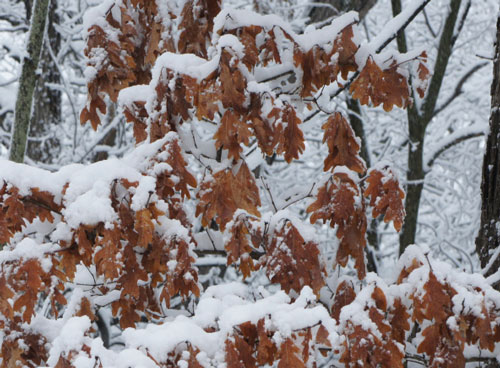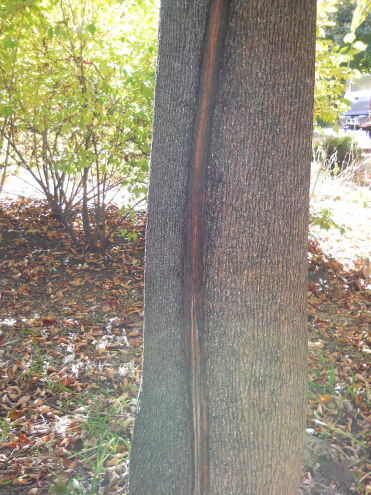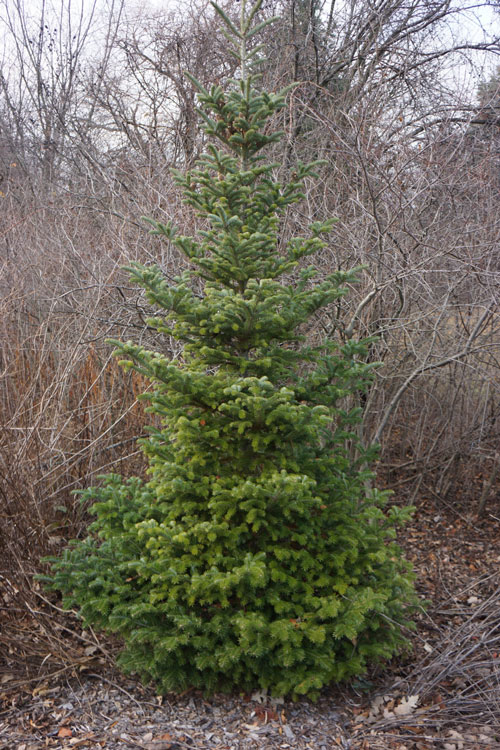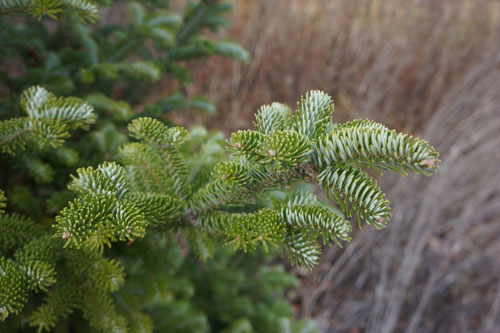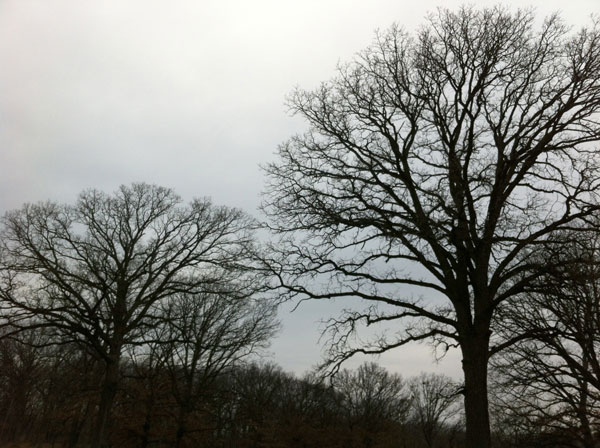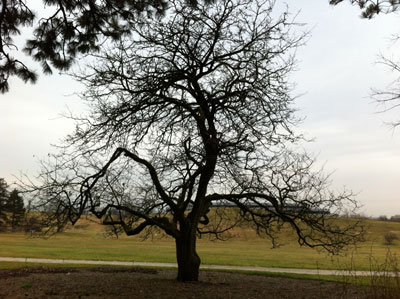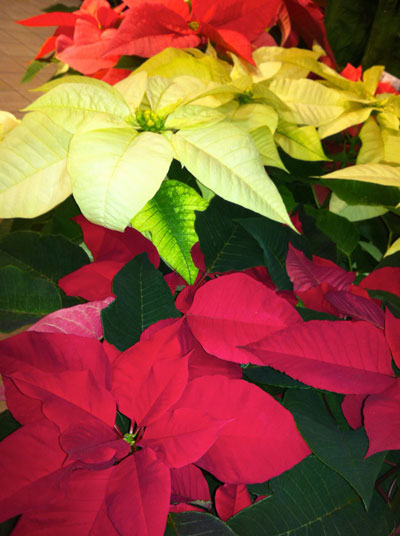December Wisdom from the Trees 2013
/Tree of the Month
Eastern White Pine • Pinus strobus
Another favorite for use as a Christmas tree
by Lesley Bruce Smith
ISA Certified Arborist
Eastern White Pine by Lesley Bruce SmithPines, in general, are a favorite tree to use for Christmas trees and Eastern White Pine, in particular, is one of our favorite species of Pine to plant for ornamental purposes in the Chicago area. It was also depicted as a symbol on the first Revolutionary War flag and thousands of 200 foot tall Eastern White Pines were felled and used as ship masts for the British Navy. To the indignation of the American colonists, the crown claimed the tallest trees and any settler caught using them might have all his land confiscated. However, it should be noted that no pine species is actually native to the northeast corner of Illinois. All the pine species capture our imagination and so we plant with abandon. Recognizing that pines are out of their comfort zone, however, helps us to understand that we need to treat them with a bit more care and tender loving. Eastern White Pines are no exception to this rule. They need to be planted out of the clay soil in northeastern Illinois, up high, in a well mulched organic soil environment where they respond best to being permitted to self mulching of their needles and cones. They are tough only when they live in well drained environments.
I love many traits of the Eastern White Pine including it’s lovely soft needles and gentle yet potentially towering presence in the landscape. Hands down my favorite attribute of the Eastern Whites is the lovely sound that the wind makes through its branches. We purposely planted them outside our bedroom windows to help lull us to sleep.
Pines have a wonderful history of being a living pharmacopoeia. Pines in their native habitats exist in some of the most extreme conditions on the globe, including drought, heat and elevation. Similar to other medicinal herbs, the naturally stressed, super tough survivors will have a greater medicinal value, possibly due to the higher levels of isomers and anti-oxidants produced by them. Pines are the source for many essential oils and the use of the Pine knot goes back to the Romans who used them as torches that they knew had both antiseptic and antibiotic properties while burning. The Cayuga peoples used the Pine knots in the treatment of tuberculosis, creating a tincture from carefully selected knots and utilizing the antibiotic, pinosylvin carried within the pith tissue.
Probably the most popular use for Pines is in the treatment of respiratory ailments. They release terpenes which have expectorant, antitussive and anti-inflammatory properties. It has been suggested by some that every hospital should have a Pine grove on its grounds where the healing properties of these magnificent plants could be fully utilized.1
1Arboretum America, Diana Beresford-Kroeger, copyright 2003
What Does Maple Syrup and Anti-freeze Have in Common? OR
Why don’t trees freeze in the winter?
Backyard Wisdom by Gilbert A Smith
ISA Certified Master Arborist
This is not an easy question to answer because though it has been studied a great deal, plant scientists still don’t completely understand the mechanisms that allow trees to survive in the cold. When trees go dormant they don’t really stop growing. They continue to function including photosynthesis, (yes, even without their leaves) they just slow way down. Living plant cells never stop creating sugars, using energy, building, transporting, and protecting their system. Most of the cell is water. When water freezes it crystalizes and expands and would rupture the cell walls, killing them. Still, trees in the Boreal Forests can survive in temperatures as low as -76℉.
Winter Oak Tree by Lesley Bruce SmithThe vast majority of cells in trees are dead. Yes, that’s right! The “inside” of temperate climate trees, the xylem, consists of dead cells penetrated with a few living cells, called ray cells, which use this dead heartwood for storage, structure and transport. The only 100% living cells are in the cambium, a thin layer just a few cells thick, just beneath the bark.
The tree protects itself against freezing by:
- Closing down the “breathing tubes” stomates and lenticils in the needles and stems.
- Sending water into the already dead xylem structure where it can’t do any damage.
- The living cells partially dehydrate, sending some of their water into the areas between the cells.
- Life still needs some water to keep living. When they dehydrate, those extremely smart tree cells have increased their concentration of sugars, and like antifreeze, those sugars lower the freezing point of the H2O.
- The final protection that the trees utilize is impossible for scientists to replicate because they kill the living cells. So when it freezes outside this thick cellular soup does not crystalize or expand so the living cell wall is not damaged, thus saving the tree.
Frost Crack on Maple Tree by Lesley Bruce SmithTrees are amazing survivors! If the temperature swings rapidly between hot and cold as it does in late or early frosts, tree cells rupture and can die, killing all or part of the tree. An example of this which we see in forests and in landscapes is frost cracks. Usually on the south side of the tree the winter sun heats thin barked trees, like Maples, during the day. When the temperature plummets at night the bark splits and remains a weak spot that opens up every winter.
We can’t manage the weather but here are some things we can do to mitigate freeze damage.
- Keep needles and leaves below tree and shrub branches as these are natural insulators.
- Plant freeze sensitive plants, like Magnolias, Japanese Maples, Rhododendrons on the North side of structures so they are not “heated up” by the southern or western sun in the winter and then super cooled at night.
- Keep evergreens further away from the house and drives, especially near glass or on South and West exposures. Again, the building or drive heats and or reflects the solar radiation in the winter causing the plants to heat up and lose their cold hardiness.
Think of your trees on a cold winter day, because your trees always appreciate your thoughts, and know that your trees are prepared for the freezing cold weather.
December Reprise
Mother Nature's Moment
by Lesley Bruce Smith ISA Certified Arborist
Douglas Fir by Lesley Bruce SmithBecause Gil’s article on Trees and Freezing and my tree of the month article on Eastern White Pines are both a bit long winded (we try to hold these posts to brief informative articles) I am going to just reference the helpful information from last year’s Mother Nature’s Moment December entries for those of you that wish to read more.
Just a reminder that using a real, cut Christmas tree is in fact an environmentally sound thing to do. Christmas trees are a totally renewable resource and the trees harvested each year end are replaced 3 fold with young saplings in the spring. Click here to see article from December 2012 Newsletter, Wisdom from the Trees dedicated to live/cut Christmas trees.
Poinsettia by Lesley Bruce SmithWilt-Pruf is a non-toxic spray on anti-desiccant, and a great way to preserve the cut greenery, including your Christmas trees, from early dry out while they are inside or out, decorating our homes. It is available at Pasquesi’s and Chalet Garden Centers.
Click here to read the article on Poinsetta’s and learn that they really are not poisonous as so often is thought. It is also available in the December 2012 Newsletter in Wisdom from the Trees.
Don't forget to take advantage of the marvelous holiday exhibitions at both the Chicago Botanic Garden and the Morton Arboretum. It is a great way to enjoy the winter weather and the wonder of the season.





